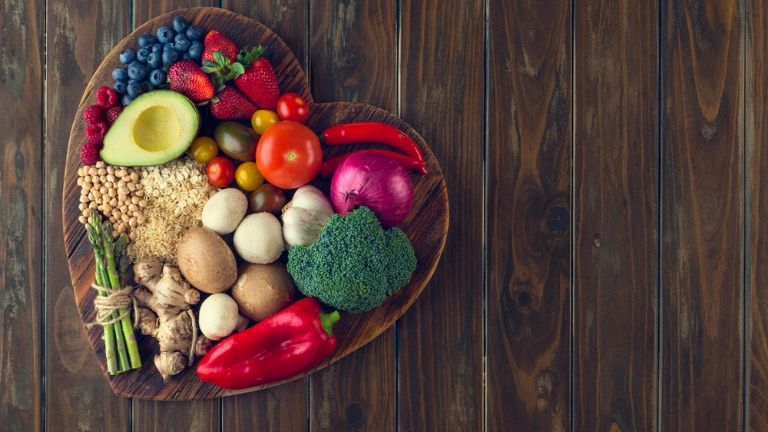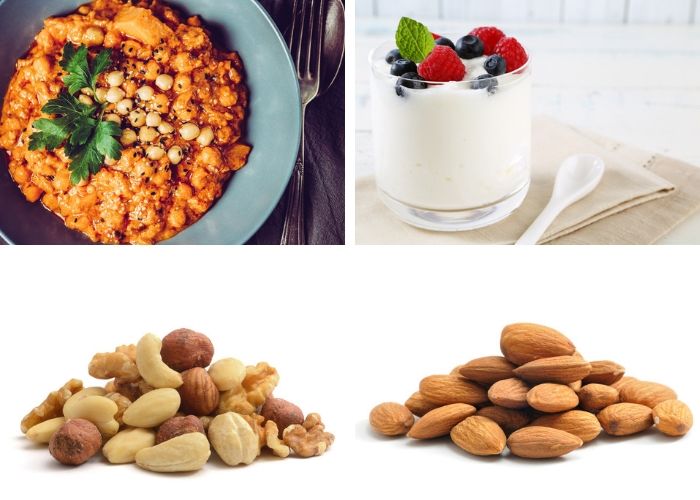Often constipated or bloated? You could be stuck in a Fibre Gap, as research shows the amount of fibre most of us eat is way below what we need – here’s expert advice
Most people who pride themselves on knowing their macros from their micros and their chia from their flax will go on about the importance of protein, fats and antioxidants. But who really talks about fibre, ever? But cold hard reality shows that Brits are living in a serious fibre crisis. We’re getting much less fibre than we need daily and we’re flatulent, constipated and bloated as a result. Plus, it’s having a devastating impact on our health long term.
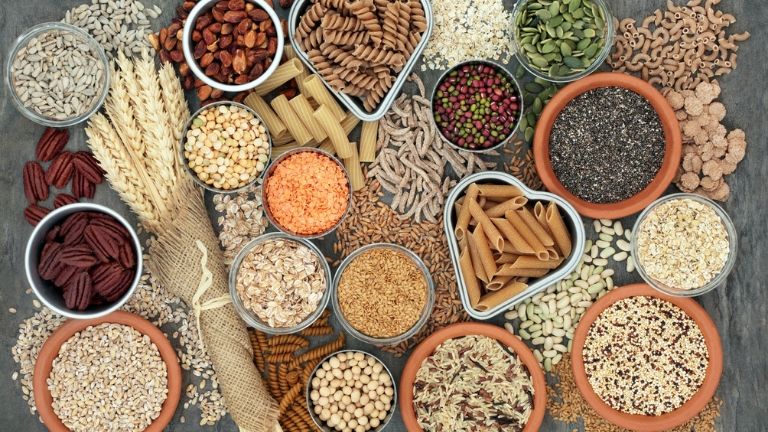
What is a fibre gap?
A fibre gap is basically the difference between how much fibre we need and how much we actually get – and, according to the latest evidence, most of us are stuck in one.
In fact, while adults need about 30 grams of fibre a day, and children need about 15 grams, only 4% of women aged between 19 and 64 are getting their 30 grams daily, according to figures from last year’s National Diet and Nutrition Survey.
For young girls aged 11-18 it was even worse, with just 2% getting the recommended 15 grams of fibre a day.
Short term signs you’re stuck in a fibre gap:
- Irritable Bowel Syndrome (IBS)
- Constipation – not passing stools daily
- Bloating
- Flatulence
- Brain fog
- Low mood
- Frequent infections
Long term risks of not enough fibre:
- Type 2 diabetes
- Heart disease
- Colon/bowel cancer
Why do we need fibre?
If you’re trying to lose weight and only focusing on fat and protein, think again. ‘Fibre can help with fat management because it binds with fats and helps get rid of them in the body,’ says registered Nutritionist Melanie Bulger.
Fibre can help with fat management because it binds with fats and helps get rid of them in the body.
It can also add bulk to your stools which helps food travel through the Gastrointestinal (GI) tract quicker and that, says Bulger, is associated not only with helping keep a stable weight, avoiding constipation, bloating and flatulence but also with a decreased risk of bowel cancer because ‘the longer food is hanging around your GI tract, the higher your risk.’
Types of fibre and how to get enough:
Soluble fibre found in oats, brown rice and wholemeal bread dissolves in the digestive tract and is important in helping lower cholesterol and moderating blood sugar levels. That’s how eating enough fibre can help protect us against the risk of type 2 diabetes and heart disease.
Insoluble fibre is the type that moves through the digestive tract without dissolving and is found in beans, lentils and pulses – all great for preventing constipation.
Another type known as prebiotic fibre is responsible for feeding the good bacteria in your gut – also known as your gut microbiome.
‘Your gut is linked to so many conditions in your body – in fact some 60 per cent of your immune system is based in your gut and it’s also where most of the feelgood hormone serotonin is made so frequent infections and low mood may indeed be a problem of not getting enough fermentable fibre,’ says Bulger.
‘A healthy gut microbiome is also important to your body’s ability to absorb essential nutrients such as calcium and helps produce vitamins B and K,’ she explains.
That’s why keeping your microbiome fed with natural prebiotics is essential to overall health. Prebiotic fibre is like fertilizer for your gut bacteria, encouraging its numbers to grow’.
Prebiotic fibre is like fertilizer for your gut bacteria, encouraging its numbers to grow.
Prebiotics – fertilizer for your gut bacteria
For years, when people think of fibre they think of oats, bran, pulses, beans and lentils – which are all essential sources of soluble and insoluble fibre.
But prebiotic fibre on the other hand (sometimes called fermentable fibre) is also essential because it feeds the healthy probiotic bugs in your gut.
‘It’s essential because our modern high fat, sugar and processed diets as well as sweeteners and medications such as antibiotics deplete the good bacteria in our guts,’ says Bulger.
‘Around 5 grams a day of your 30 gram fibre allowance should come from prebiotic fibre,’ she says.
Natural sources of prebiotic fibre include:
- Bananas
- Raw leeks
- Raw onions
- Jerusalem artichokes
- Raw garlic
- Chicory root powder
- Cooked onions
- Raw asparagus
- Wholewheat flour
‘The list above is foods with high levels of prebiotics, Bulger asserts. ‘But all vegetables pack a punch in prebiotic fibre, especially if you aim to eat lots of different colours,’ Bulger asserts.
The shortcut to getting enough prebiotics
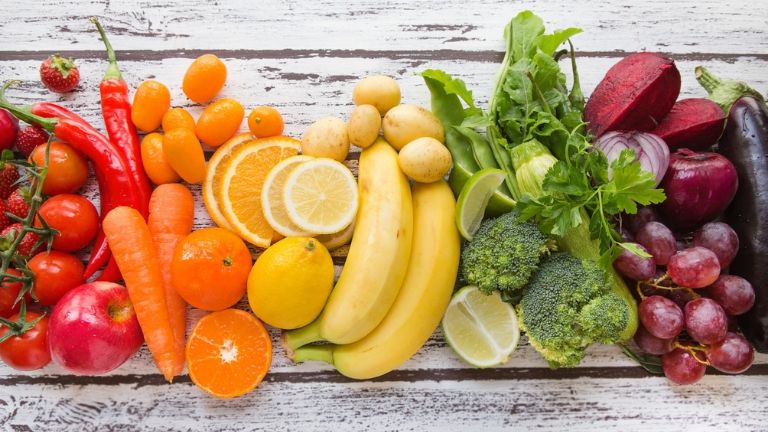
‘I would love to imagine everyone gets their prebiotic fibre from their diets, but it’s just not happening,’ says Bulger.
‘We’re needing a bit of help to bridge the gap between how much fibre we need and how much we eat – especially when it comes to getting that essential 5 grams of prebiotic fibre daily.
That’s where the next phase of gut bacteria supplements comes in: prebiotic powder.
‘Companies are now isolating the prebiotic fibres from foods such as chicory or artichoke, but they’re not always very easy to tolerate for the body,’ says Dr Hobson, Dr Anthony Hobson, a gastroenterologist and founder of The Functional Gut Clinic.
I would love to imagine everyone gets their prebiotic fibre from their diets, but it’s just not happening.
One of the most researched of these is Bimuno®, a unique prebiotic food supplement that is the product of ongoing research and development at the University of Reading’s Food Microbial Sciences Unit.
Bimuno has been the subject of numerous scientific studies. The studies show it’s not only really easy to digest and tolerate, it can reset natural bacteria, feeding the friendly species already in your large intestine (gut) and stimulate the growth of beneficial bacteria.
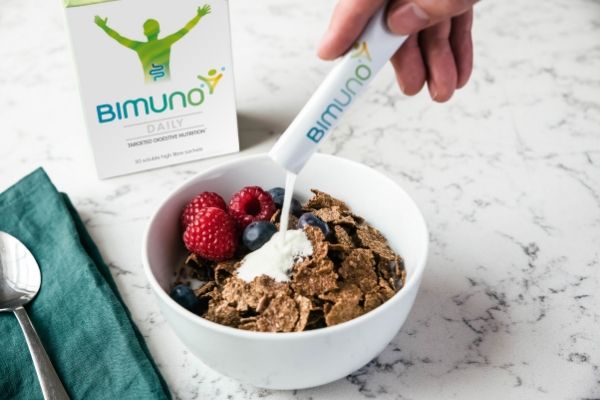
Made by converting the natural sugars in milk into a unique prebiotic carbohydrate complex called Beta-galactooligosaccharide, it comes in 3 varieties: a daily powder sachet, Bimuno Daily, £11.99 which you can use in tea, smoothies or water (it’s fairly tasteless) or sprinkle it on your breakfast, a chewable pastille Ibaid £11.99 (take 2 a day) or in a specific formulation Travelaid, £11.99 to maintain gut health whilst travelling.
Studies have shown that with daily use, most Bimuno users experience a significant increase in their levels of healthy gut bacteria within just 7 days.
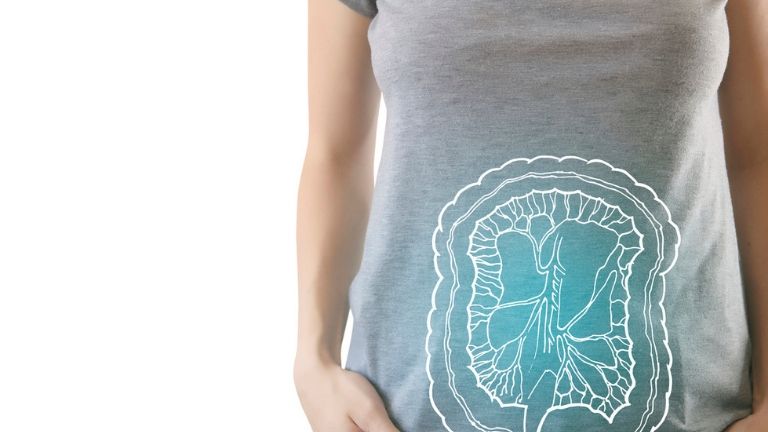
‘And by encouraging levels of friendly bacteria in the gut, there are less resources and space for bad bacteria to grow,’ says Dr Hobson. ‘It’s the one supplement I have seen that seems to strike a balance of being able to provide real gut benefits without the side effects.’
Bimuno is available to buy from Boots, Lloyds Pharmacy, Holland & Barrett, Amazon and Bimuno.com.
Visit bimuno.com/balance and get 10% off Bimuno, use code HEALTHISTA10 at checkout.
What’s causing YOUR fibre gap?
Our highly processed diets – recent research has linked our ultra-processed diets to early death and a host of other serious health issues and one of the reasons eating this way is so seriously risky is not only because of the high sugar, fat and salt levels in processed foods.
It’s also because of the serious lack of fibre. ‘Eating more processed foods simply means people are eating less of the fresh and wholesome foods such as grains, vegetables, pulses and fruits from which people would get their essential fibre,’ says Bulger. ‘This is probably the biggest health issue facing us today.’
The gluten free trend – ‘In the last ten years, it has almost become as though eating gluten free is a healthy way to eat,’ says Bulger. ‘But going gluten-free is for people who have coeliac disease which is a serious condition in which the body cannot tolerate gluten.
For the rest of us, cutting out gluten-containing foods such as wholemeal bread and pasta can mean we miss out on a lot of our essential fibre.’
Cutting out gluten-containing foods such as wholemeal bread and pasta can mean we miss out on a lot of our essential fibre.
Keto and other high protein diets – Ketogenic, Atkins and other diets that cut out all complex carbohydrates (many limit nutrient-rich simple carbohydrates such as fruit too) in favour of protein and fat can mean much less fibre in the diet, resulting in constipation and bloating.
‘Such diets are also bad for your microbiome too, as the healthy bacteria in your gut needs fibre to function.’
Juicing – the popular rise in juice-fasting diets has also contributed to our fibre gap.
While drinking a fresh vegetable juice (perhaps with a little fruit added) can be a great way of getting nutrients into your diet, programmes focusing on drinking only fruit and vegetable juices for days at a time remove a lot of the fibre from the fruits and vegetables, and leave you with a lot of sugar. Not a good mix if it’s all you’re eating for days.
What does a day’s worth of eating enough fibre look like?
It’s not that difficult to get all your fibre in a day. If you’re wondering, here’s an example of a day’s eating that delivers healthy fibre levels designed by Melanie Bulger.
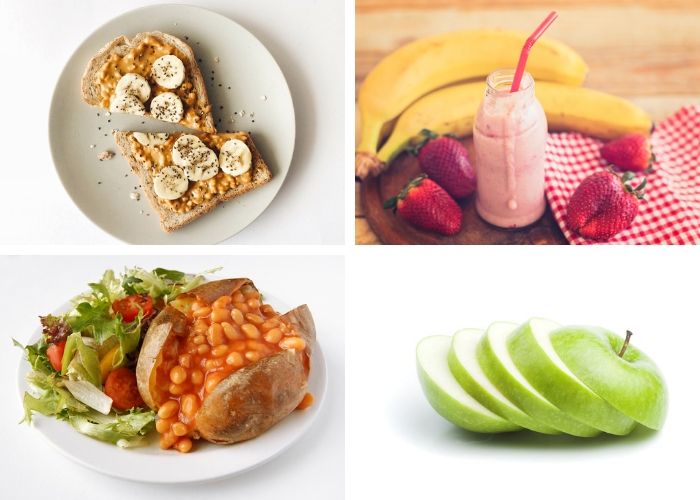
Small fruit smoothie – 1.5g fibre
Lunch Baked jacket potato with skin – 2.6g fibre
200g reduced sugar, reduced salt baked beans in tomato sauce – 9.8g fibre
Apple – 1.2g fibre
Dinner Mixed vegetable tomato-based curry cooked with onion and spices – 3.3g fibre
With 100g wholegrain rice – add 2.8g fibre
Plain yoghurt with fruit – 0.4g fibre
Snacks A handful of nuts can have up to 3g of fibre
Visit bimuno.com/balance and get 10% off Bimuno, use code HEALTHISTA10 at checkout.
More Healthista Content:
12 easy ways to cut back on plastic
6 ways to tell if your manuka honey is real or a fake
What these health experts eat for breakfast
8 best foods for glowing skin proven by science
Like this article? Sign up to our newsletter to get more articles like this delivered straight to your inbox.



